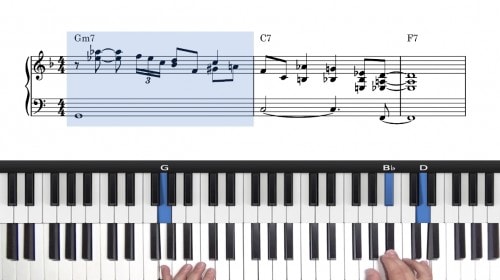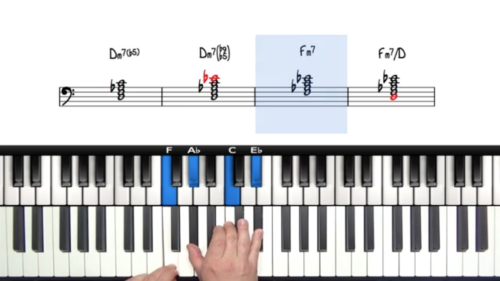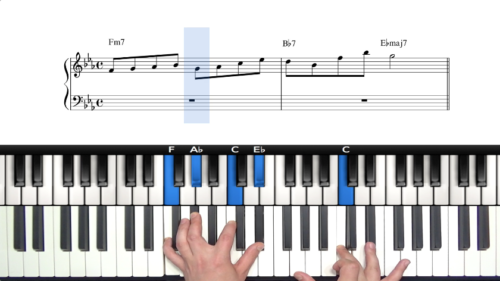251 Soloing For Beginners
In this lesson we solo over the 12 bar blues by outlining the arpeggios of the 251 passing chords in our right hand melody lines.
We demonstrate how we can solo with the notes of the 251s without actually playing the voicings in our left hand. We simply imply the additional 251 progressions in the way that we solo.
Identify The Passing Chords
As we explored earlier in this course, we can add 251s into the core chord changes of the 12 bar blues progression to create additional harmonic interest and movement. Here we have an additional 25 progression which takes us to the IV chord Bb7:

In this example we are applying passing chords purely from a chordal perspective. We will now explore ways to imply these additional passing chords in our right hand soloing and improvisation.
Outline The Arpeggios
We can creative improvised lines in our right hand that outline the arpeggios of the passing chords. Here we have arpeggio-based lines for the C-7 and F7 chords which can be used to approach the IV chord – Bb7:

Applying this principle to the tunes that you are playing will help to develop your ability with chord tone soloing and visualising the 3rds and 7ths in your melody lines.
If you have run our of melodic material, using 7th chord arpeggios combined with approach patterns and enclosures will create strong melodic fills that fit with the underlying harmony.
Lesson Downloads
-
Passing Chords For Improvisation File Type: pdf
-
Passing Chords Arpeggio Lines File Type: pdf
Practice Tips
-
Passing chords can be implied in our melody lines before a chord change and we don't have to play the voicings in our left hand.
-
Improvise with the arpeggio shapes of passing chords and then resolve into the primary chord tones of the core changes I, IV, and V.
-
Use approach patterns and enclosures to connect the arpeggio shapes smoothly and cleanly.







